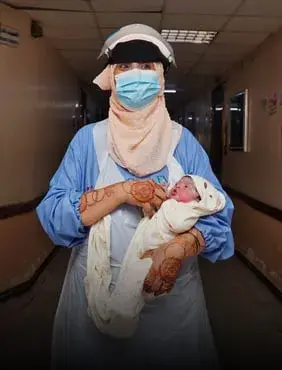Yemen remains one of the world’s largest humanitarian crises. A staggering 21.6 million people require some form of humanitarian assistance in 2023, and 80 per cent of the country’s population struggles to access food, safe drinking water and adequate health services. These are the results of multiple overlapping emergencies that have pummeled the country: violent conflict, economic collapse, recurrent natural disasters and severely disrupted public services.
Women and girls hardest hit
Women and girls are bearing the brunt of the crisis. An estimated 80 per cent of the 4.5 million people displaced in Yemen are women and children. Approximately 26 per cent of displaced households are headed by women.
Discriminatory societal attitudes towards women’s movement and economic and social engagement remain entrenched, and worsening existing inequalities and hindering women’s access to basic services. The ‘mahram’ (male guardian) requirement, increasingly imposed in northern parts of the country in 2022, whereby women must be accompanied by a male family member to travel, also applied to female national aid workers, not only restricts the ability of the humanitarian community to deliver life-saving assistance, particularly to women and girls but also serve to exacerbate women’s economic insecurity and access to health and protection services, with resulting repercussions for their physical and mental health. Access to basic rights and freedom of movement are even more challenging for women and girls who lack access to legal documentation due to discriminatory laws and procedures.
Protection for women and girls remains urgent
Women and girls also continue to suffer disproportionately from gender-based violence. While this situation existed prior to the conflict, it is now greatly exacerbated as communities and families increasingly resort to negative coping strategies to survive. With limited shelter options and a breakdown in formal and informal protection mechanisms, girls are increasingly vulnerable to child marriage, human trafficking, begging and child labour, among others. Women and girls with disabilities face an even greater risk of gender-based violence in the communities and available services are not equipped logistically to accommodate their needs. An estimated 7.1 million women and girls will require services to prevent and address gender-based violence in 2023. However, such services remain overstretched across Yemen, and completely absent in some hard-to-reach areas. At the same time, data on gender-based violence remains extremely thin and unreliable due to fear of reporting, stigma and lack of legal redress mechanisms, among other factors.
Maternal mortality rates at a high
Maternal mortality rates in Yemen remain extremely high; the highest in the Middle East and Northern Africa region. One woman dies in childbirth every two hours in Yemen, mostly from causes that are entirely preventable. Less than half of births are assisted by skilled medical personnel and only one third of births take place in a health facility. Women of childbearing age, particularly pregnant and lactating women, have limited or no access to reproductive health services, including antenatal care, safe delivery, postnatal care, family planning and emergency obstetric and new-born care.
Poor coverage, lack of specialized staff, inadequacy of essential medical supplies and a lack of female doctors, particularly at primary health care facility level, affects three-quarters of rural women’s access to maternal health services. Without access to lifesaving medicines, about 1 million women who are estimated to deliver in 2023 are particularly at risk. Another 1 million women who would want to use family planning to postpone or avoid pregnancy will be at risk of unwanted pregnancies. Lack of access to other reproductive health medicines, including for prevention and treatment of sexually transmitted infections and gender-based violence exacerbates reproductive health morbidity and mortality for both women and men.
Over 1.5 million pregnant and breastfeeding women are projected to experience acute malnutrition sometime in the course of 2023. They risk giving birth to newborns with severe stunted growth, and nursing malnourished infants, as a result of rising food insecurity.
The health system has cratered
Less than half of Yemen’s hospitals remain functional with an estimated 11 per cent fully or partially damaged due to the conflict. This is compounded by extreme shortages of essential medicines, supplies and specialized staff, only 1 in 5 of the functioning facilities is able to provide maternal and child health services. Nineteen out of 22 governorates face severe shortages in available maternity beds – less than six beds per 10,000 people, half of the WHO standard. In addition, an estimated 42 per cent of Yemen’s population lives more than one hour away from the nearest fully or partially functional public hospital.
Mental health needs soar
The cumulative impact of conflict and deprivation has also taken a heavy toll on the mental health of Yemenis, particularly its women and girls. Mental health care remains scarce, and mental illness is highly stigmatized. An estimated 7 million people require mental health treatment and support, but only 120,000 have uninterrupted access to these services.


